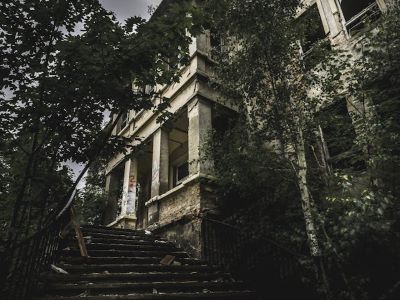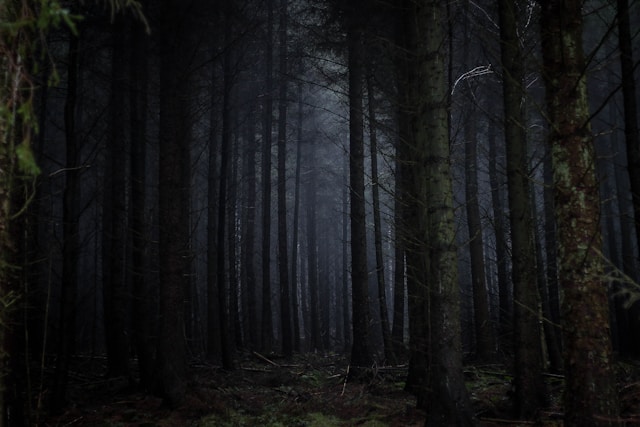Horror films often linger in the shadows of academia, sometimes dismissed for their visceral punches rather than their intellectual weight. However, these films, when peeled back layer by chilling layer, reveal a complex tapestry of societal fears, human psychology, and philosophical dilemmas. From the silent screams of early cinema to the digital haunts of the modern era, horror films have continuously evolved, each era reflecting its own unique terrors and obsessions. As such, they offer fertile ground for academic analysis, helping students and scholars alike to understand not just the mechanics of filmmaking but also the deeper, often unsettling truths about the world we live in. In this article, we will delve into a curated list of horror films that are not just thrilling cinematic experiences but also richly layered narratives that deserve to be discussed, debated and dissected in film classes.
Psycho (1960) by Alfred Hitchcock
Alfred Hitchcock’s Psycho is a cornerstone of horror and suspense cinema, renowned for its innovative cinematography and the director’s ability to grip audiences with palpable tension. The film’s infamous shower scene alone could be dissected frame by frame for its audacious editing and sound design, which have been endlessly influential. Beyond the technical brilliance, Psycho offers a deep dive into disturbed psychologies, particularly through Norman Bates, a character whose complexity has made him a subject of fascination and horror.
Analyzing Psycho in a film class allows students to explore several layers of human psychology, the use of perspective to build suspense, and Hitchcock’s mastery of the visual narrative. It’s an exemplary model for those thinking, “paper writing service WritePaper,” as it provides a multifaceted approach to character analysis, thematic depth, and narrative structure. The film’s dramatic structure, shifting protagonist midway, challenges conventional storytelling and provides a rich discussion point for narrative innovation. Hitchcock’s manipulation of audience sympathies and expectations crafts a viewing experience that is both unsettling and intellectually engaging, making Psycho an essential study for any film student interested in the elements of suspense and horror.
The Exorcist (1973) by William Friedkin
When The Exorcist premiered in the early 70s, it did more than just terrify audiences’”it became a cultural phenomenon, sparking intense debates and discussions about the nature of evil, faith, and the supernatural. Directed by William Friedkin and adapted from William Peter Blatty’s novel, the film’s approach to horror is deeply rooted in the existential crises of its characters, particularly that of Father Karras, a priest who is grappling with his faith.
The Exorcist is particularly notable for its groundbreaking special effects, which, while shocking, serve a greater purpose than mere spectacle. They enhance the film’s exploration of good versus evil, human versus demon, and faith versus doubt. These themes are presented with such intensity and realism that they invite viewers to reflect on their own beliefs about the supernatural and the afterlife.
The Exorcist is ripe for analysis of its thematic complexity and its revolutionary approach to horror filmmaking. The film employs a variety of techniques, from unsettling sound designs to the meticulous use of location and setting to evoke dread and a sense of inevitability. Analyzing these elements helps students appreciate how technical aspects of filmmaking can be aligned so effectively to amplify the thematic concerns of a narrative. Furthermore, the societal reaction to the film’”ranging from widespread outrage to critical acclaim’”provides an additional layer of discussion about the impact of cinema on societal norms and personal values, making The Exorcist a compelling case study for the power of film as a reflection of contemporary societal tensions.
Halloween (1978) by John Carpenter
John Carpenter’s Halloween is a seminal work in the horror genre, particularly within the slasher subgenre, which it helped to define and popularize. The film’s plot is deceptively simple’”a masked killer stalks babysitters on Halloween night’”but its execution is a masterclass in tension-building and atmosphere. Carpenter uses a minimalist approach, employing a haunting score that he composed himself, which has become iconic in its ability to evoke fear. The use of first-person camera shots also immerses viewers in the perspective of the killer, adding a chilling intimacy to the terror.
Analyzing Halloween in a film class offers students insights into how effective storytelling can be achieved with limited resources. The film’s reliance on suspense rather than graphic violence encourages a focus on pacing and the strategic use of music and camera angles to enhance the psychological tension. Michael Myers, as the relentless antagonist, becomes almost a force of nature’”his background and motivations are sparse, making him an enigmatic and terrifying figure. This lack of backstory invites discussions about the nature of evil and the fear of the unknown, both central themes in many horror narratives.
The Blair Witch Project (1999) by Daniel Myrick and Eduardo Sánchez
The Blair Witch Project stands as a landmark in horror filmmaking, primarily for its pioneering use of the found footage technique, which brought a new level of realism to the genre. The film’s story of three filmmakers disappearing while making a documentary about a mythical witch created a sense of authenticity and immediacy that had seldom been felt in horror cinema before. This was further amplified by a novel marketing campaign that suggested the footage was real, blurring the lines between fiction and reality for audiences.
In film classes, The Blair Witch Project can be analyzed for its innovative narrative structure and its ability to create horror through what is unseen and unexplained. The film’s reliance on the audience’s imagination to conjure its terrors makes it a fascinating study of psychological horror and the power of suggestion. This approach to horror emphasizes atmosphere and dread over visual shocks, making it a prime example of how tension can be maximized through minimalistic means. The film also offers a case study in viral marketing and the use of media to create and sustain an aura around a film before its release.
Get Out (2017) by Jordan Peele
Jordan Peele’s Get Out marked a significant moment in the evolution of the horror genre, seamlessly blending traditional horror elements with poignant social commentary. The film uses the framework of a psychological thriller to explore racial tensions and the insidious nature of liberal racism in America. Peele crafts a narrative that is both a compelling horror story and a sharp societal critique, using the genre to highlight issues that are often sidelined in mainstream cinema.
In a film class, Get Out can be dissected for its layered storytelling, symbolism, and the use of horror tropes to discuss complex social issues. The film’s success at weaving together social commentary with entertainment demonstrates how horror can be a powerful vehicle for exploring real-world fears and prejudices. Analyzing Get Out helps students understand the ways in which filmmakers can use genre conventions to engage with and comment on societal issues, making it an excellent example of the potential of horror films to transcend pure entertainment and provoke thoughtful discussion.
Conclusion
The horror films discussed here’”ranging from Psycho to Get Out’”offer more than just scares; they provide valuable insights into the human condition, societal fears, and the art of filmmaking itself. Each film, with its unique approach to horror and storytelling, demonstrates the genre’s capacity to serve as a mirror to society, reflecting our deepest anxieties and concerns. By incorporating these films into a film studies curriculum, educators can offer students a comprehensive look at how horror films shape and are shaped by the cultural and historical contexts in which they are made. As we have seen, horror films are not only worthy of academic analysis but are essential for understanding the broader narrative techniques and themes that define cinematic art.


